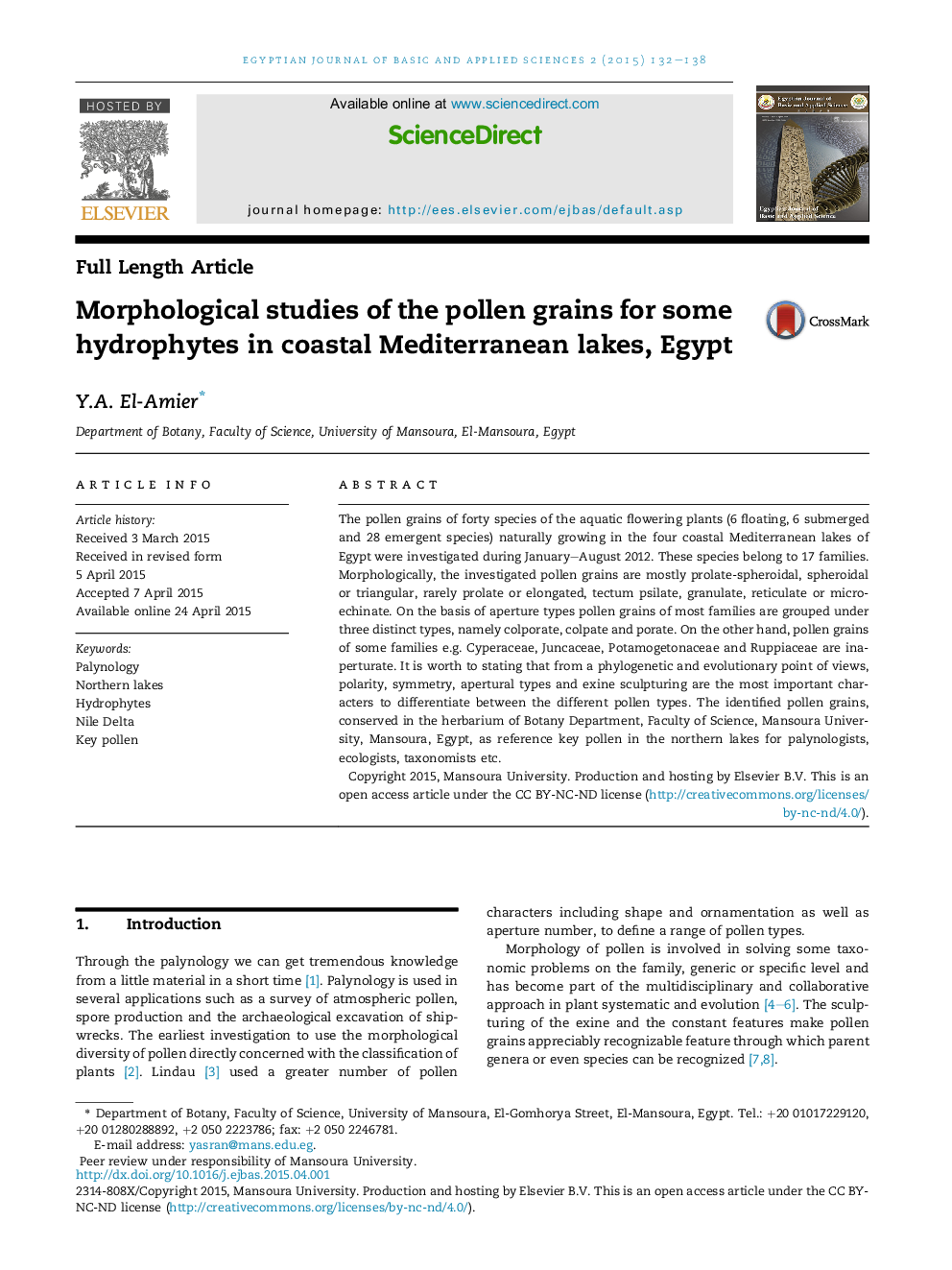| Article ID | Journal | Published Year | Pages | File Type |
|---|---|---|---|---|
| 558986 | Egyptian Journal of Basic and Applied Sciences | 2015 | 7 Pages |
•The identified pollen grains as reference key pollen in the northern lakes for palynologists, ecologists, taxonomists etc.•Understanding the pollen morphology of aquatic plants naturally growing in four northern Mediterranean lakes of Egypt.•The earliest investigation to use the morphological diversity of pollen directly concerned with the classification of plants.
The pollen grains of forty species of the aquatic flowering plants (6 floating, 6 submerged and 28 emergent species) naturally growing in the four coastal Mediterranean lakes of Egypt were investigated during January–August 2012. These species belong to 17 families. Morphologically, the investigated pollen grains are mostly prolate-spheroidal, spheroidal or triangular, rarely prolate or elongated, tectum psilate, granulate, reticulate or microechinate. On the basis of aperture types pollen grains of most families are grouped under three distinct types, namely colporate, colpate and porate. On the other hand, pollen grains of some families e.g. Cyperaceae, Juncaceae, Potamogetonaceae and Ruppiaceae are inaperturate. It is worth to stating that from a phylogenetic and evolutionary point of views, polarity, symmetry, apertural types and exine sculpturing are the most important characters to differentiate between the different pollen types. The identified pollen grains, conserved in the herbarium of Botany Department, Faculty of Science, Mansoura University, Mansoura, Egypt, as reference key pollen in the northern lakes for palynologists, ecologists, taxonomists etc.
